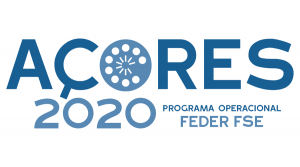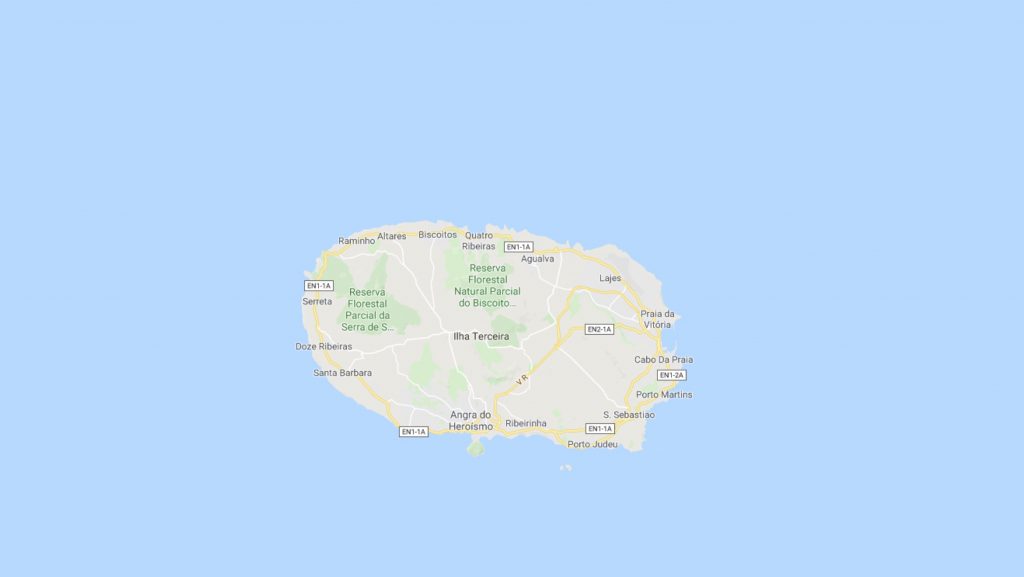
GEOGRAPHY
Terceira Island is the second most populous island in the Azores Islands, with 56,437 residents (data from 2011). Located at 38 ° 43’47 ’’ north latitude and 27 ° 19’11 ’’ west longitude, it has an area of 401.9 km2 (30.1 km long by 17.6 km maximum width).
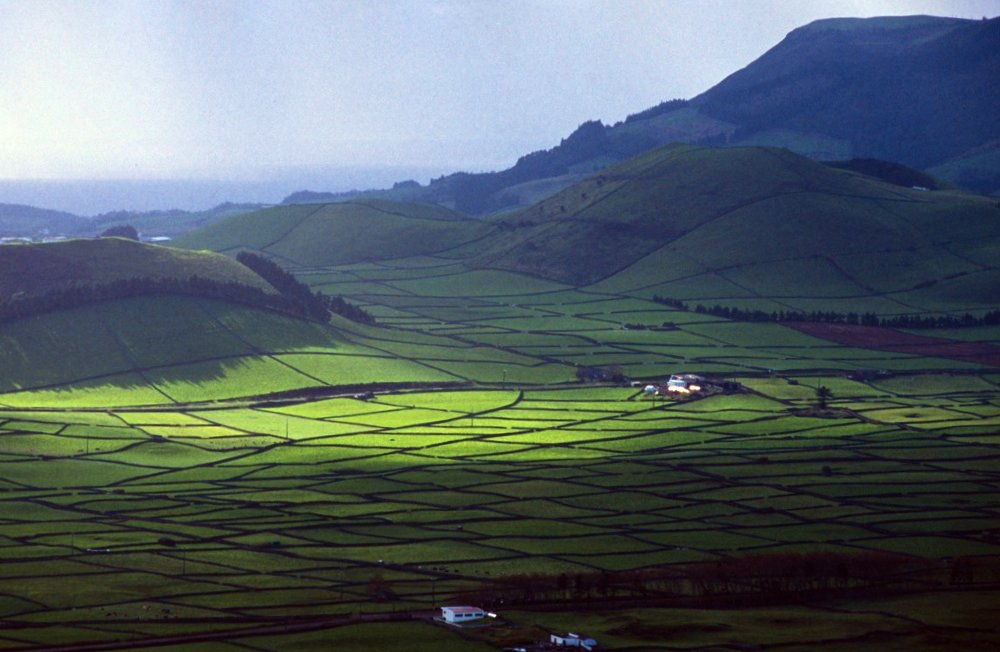
Of the five islands that make up the Central Group of the Azores Islands, Terceira Island is the easternmost one; is 37.9 km from São Jorge. Its highest point is the Serra de Santa Bárbara (1021 m).
HISTORY
It was the third island of the archipelago to be known by Portuguese sailors, probably between the end of 1420 and the beginning of 1430. Its initial designation was ‘Island of Jesus Christ’.
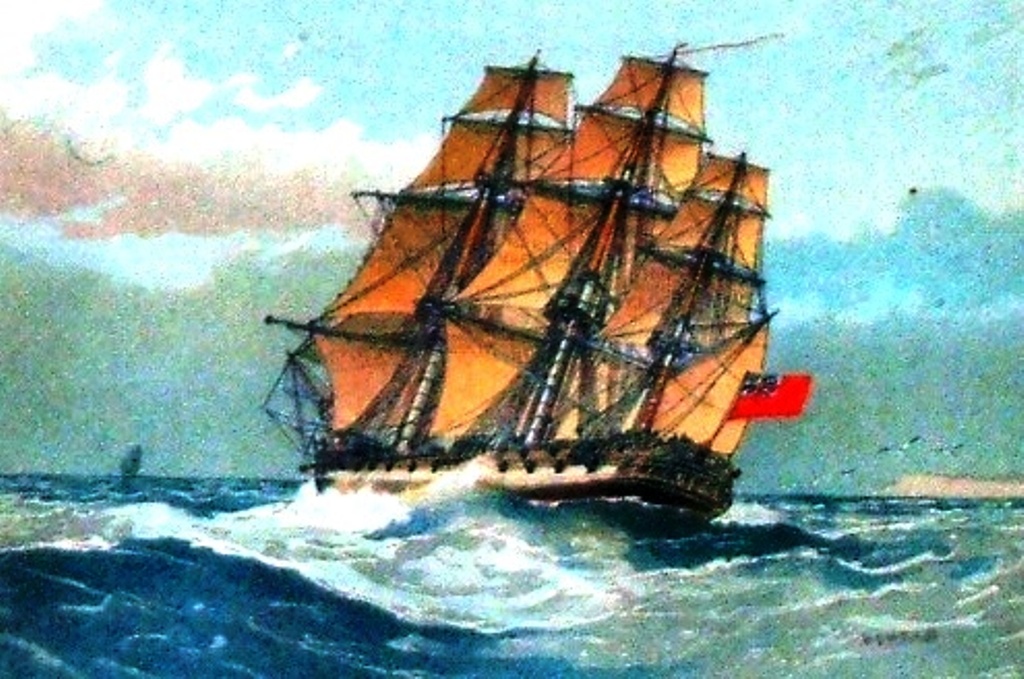
The name that was later attributed to it (Terceira means ‘third’) recalls the order in which the discoveries were made (before it Santa Maria and São Miguel were known). The population, relative to the Eastern Group, was later: only in 1449 the Infante D. Henrique commissioned Jácome de Bruges, a Flemish, to introduce settlers to the island. Despite this, the island began to be actually inhabited only after 1470, around the nuclei of Praia and Angra, which guided the subsequent development of other settlements on the rest of the territory.
During the 15th and 16th centuries, the port importance of the Angra inlet was affirming itself, not only as an internal commercial platform, where regional products were sorted, but also as an intercontinental port for ships traveling between Europe, the America and India. The city of Angra, founded in 1534, became the political, economic and religious center of the Azores: precious metals and exotic spices abounded, making the island a sought after prey for English, French, Spanish and Flemish corsairs.
In 1580, on the occasion of the accession to the throne of Portugal by the Spanish king Philip II, the inhabitants of Terceira Island sided in favor of the Portuguese candidate, D. António Prior do Crato. Spain tried to eradicate the revolt, but the first landing of the Castilian troops, in 1581, resulted in a heavy defeat, during the famous battle of Salga. Two years later, the Spaniards returned with a larger contingent, and managed to predominate after violent battles. With the Restoration of 1640, Portugal regained its independence, and Terceira consolidated its position as the center of the archipelago.
The courage of the inhabitants was again put to the test during the Liberal Wars. Having largely embraced the liberal cause, the island’s population rose up against absolutist rule, already fully triumphant in other areas of the country. In 1829, a fierce naval battle ended with the defeat of D. Miguel’s absolutist troops attempting to land on the Praia beach. After this event, the city changed its name to Praia da Vitória (‘victory beach’). During this troubled historical period, Terceira was the base from which D. Pedro IV organized the reconquest of the throne and strengthened the constitutional monarchy. Angra was named capital of the kingdom of Portugal, and “do Heroísmo” (the current name means “inlet of heroism”) was added to its name. In 1832 the naval army and the army left the island, heading for the continent. Their landing on Mindelo beach was decisive for the victory of the liberal ideal.
During the Second World War, the British were allowed to install a military base on the island, near Praia da Vitória, which later passed to the North American Air Force. The well-known and still operational NATO base in Lajes produced its influence on local populations. Proud of its business-rich past, Terceira is still a very dynamic island within the archipelago. In 1983 the historic center of Angra do Heroísmo was recognized by UNESCO as part of the world heritage site.
NATURE
THE LILAC ISLAND
In the central part of the island is the Caldeira de Guilherme Moniz, flooded by lava erupted two thousand years ago by the cone of the Algar do Carvão, where today the largest heather patch in the Azores is found.
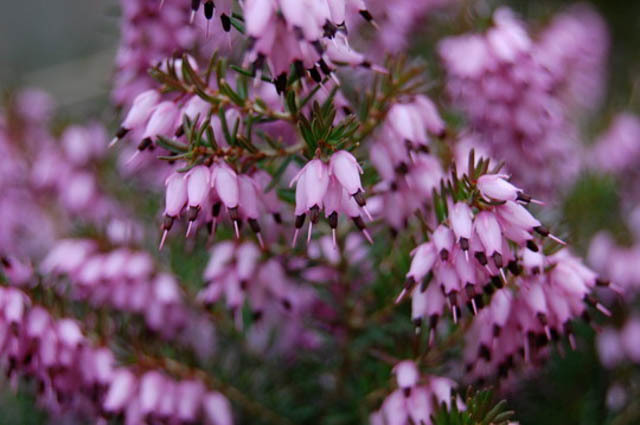
An identical scenario occurs in the north, at the Biscoito da Ferraria and Pico Alto, and in the west, on the Serra de Santa Bárbara, where the dense wooded areas of endemic vegetation remind us of the original forest of the archipelago, generally designated as laurisilva cone. Terceira, in fact, is the island that has preserved the largest woodland extension of essences prior to human population.The green that dominates within the island lightens on its periphery, given that human occupation took place along the coasts. And here, among the colored houses, the lilac color used on many facades stands out, especially in the city of Angra do Heroísmo.
VOLCANIC LANDSCAPES
The memories of volcanic activity take on peculiar, spectacular and easily visited forms in Terceira. As for the underground reality, the Algar do Carvão deserves special mention, where you can see the remains of an ancient volcanic pipeline, which is striking for its vastness. From its vault hang the largest silicon stalactites in the world. The Gruta do Natal, a lava tunnel, arouses wonder for the succession of narrow and long corridors and for the different shapes and colors that the walls, the ground and the ceiling assume: the cave really looks like a mystical place. On the surface, the Furnas do Enxofre constitute the eloquent testimony of the strength of the Azorean volcanism: the landscape is dominated by fumaroles surrounded by reddish soils, whose color contrasts with the green of the moss and the remaining vegetation. The atmosphere is warm, and the peculiar smell of sulfur is felt.It is from the heights of the mountains, from the belvederes located in strategic points, that one can best witness the immensity of its volcanoes, and internalize the adventure in which man has tamed them. When you climb Mount Brasil, you don’t notice that you are treading on an ancient volcano emerging from the sea – the largest and best preserved of the Azores -, and you enjoy one of the most beautiful prospects on the city and on the inlet of Angra do Heroísmo. From the top of the Serra do Cume you can grasp the geometry of the countless stone walls and hydrangea hedges that delimit the pastures of Terceira. From Miradouro do Facho, where the imposing monument to the ‘Immaculate Heart of Mary’ is located, you can enjoy an exceptional panoramic view of the beach, the marina and the neighborhoods of Praia da Vitória, surrounded by the Lajes plain whose vastness has motivated the construction of the airport in this location. But the long list of impressive places could continue…
COAST
On the Praia da Vitória beach, the largest on the island, history combines fun, urbanity with isolation and the sun with warm waters. There are many natural pools all over the island, more or less equipped with bathing facilities: Porto Martins, Biscoitos, Negrito and Silveira are just some of them. Spikes, promontories and inlets characterize the entire Terceira Island coast, ensuring scenarios of rare beauty, as in the case of the bays of Quatro Ribeiras, Salga, Mina or Fanal.
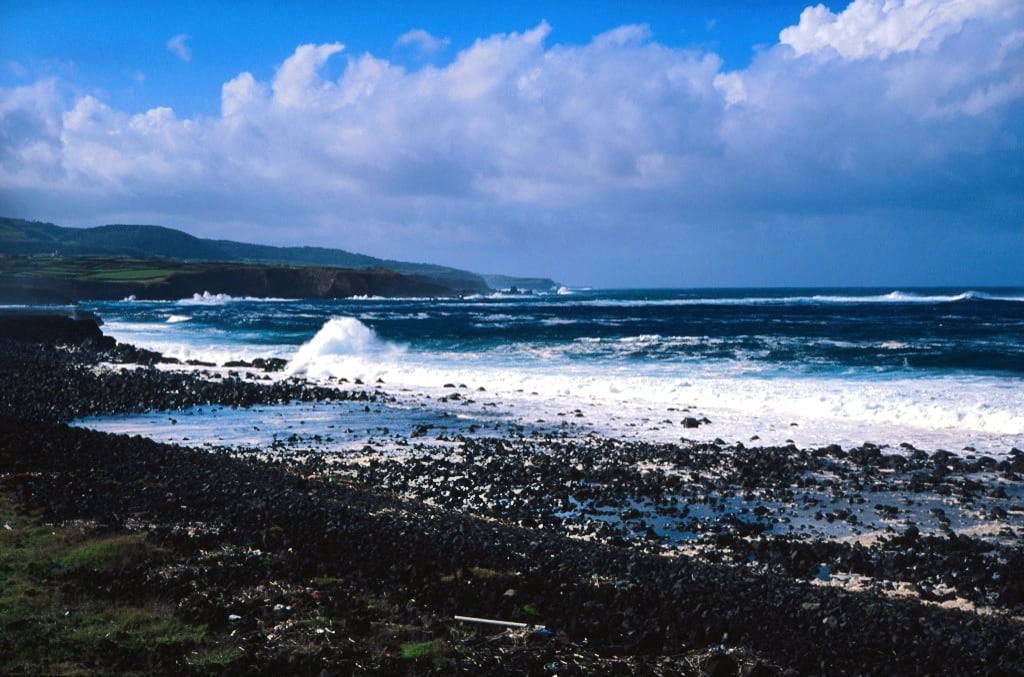
The west coast of the island is more linear and characterized by high and dizzying cliffs, which plunge sharply into the ocean, sometimes interrupted by promontories that stretch out over the sea, testifying to the flow of more recent lava flows. The peaks of Raminho or Queimado, with the Serreta Lighthouse acting as a sentinel, are extremely elucidative examples. The Lagoa de Fajãzinha area in Agualva is also a witness of this geological reality, a singular place that seems rigorously designed “with team and ruler” by a wise nature.
ATTRACTIONS
In the bay of Praia da Vitória it is possible to practice surfing, bodyboarding, windsurfing, water skiing, water motorbike, dinghy or skate, sailing or kaiak outings and whale and dolphin watching: in short, a wide offer, at sea, of entertainment and activities. Some of these can also be practiced in Angra, where the Submarine Archaeological Park is also located.
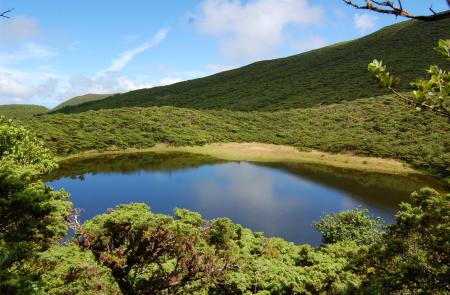
Sea fishing and spearfishing can take advantage of excellent locations close to the coast of the island, and for scuba diving there are professional offers that include ‘baptism’ and course. Various natural pools – Salgueiros, Silveira, Negrito, Quatro Ribeiras, Biscoitos and Porto Martins – are equipped with excellent bathing infrastructure.The list of possible activities to be undertaken in Terceira Island is vast. Algar do Carvão and Gruta do Natal are two extraordinary caving experiences. And for the more experienced, with the help of a guide, there are other caves and caves to explore all over the island. Sports climbing is also in great development, and there are several perfectly equipped schools, including ‘Chanoca’, ‘Chupa Cabras’ and ‘Grota do Medo’. Paragliding enthusiasts can find various places to practice the mode. The island also invites to stroll on foot, by bicycle, in BTT, on horseback and even on the back of a donkey. There is an Adventure Park in the Quinta do Galo, and it is easy to rent 4 × 4 jeeps and motorbikes4. At the Terceira Golf Club fans of this sport can find their ideal place.
HERITAGE AND TRADITIONS:
ANGRA DO HEROISMO
The title of “Mui Nobre, Leal and Semper Constante” (‘noble, loyal and always faithful’) attributed to the city of Angra do Heroísmo underlines the importance it had in the history of all Portugal and, of course, in that of the Azores .The relief of the bay of Angra, especially in the 15th and 16th centuries, and the importance that the city assumed in the political, economic and religious chessboard of the Azores are evident in its urban order
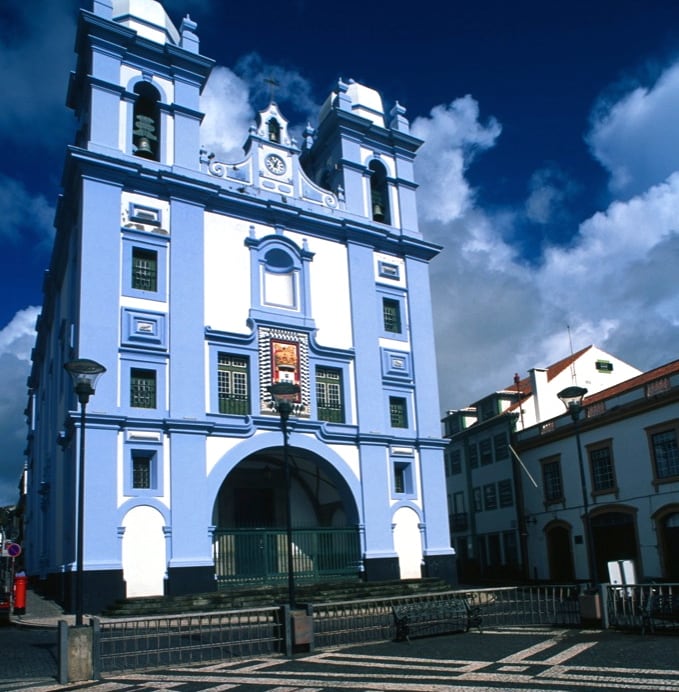
Observed from the Alto da Memória or from the viewpoint of Monte Brasil, the historic center of Angra do Heroísmo appears as an elaborate embroidery of streets, alleys, churches, palaces, stately homes, monuments, squares and gardens that generations of conscious citizens have been able to preserve and pass down to the present day, even fighting against the telluric forces. This is what UNESCO recognized, placing the historic center of Angra do Heroísmo on the list of places considered world heritage.
ARCHITECTURE
The imposing fortification of São João Baptista, in the city of Angra do Heroísmo, built around 400 years ago, is a unique example of Azorean military architecture, and stands as a defense of urban identity. Palaces, churches, convents and museums are all places open to the public: you can therefore visit the Cathedral, the Palazzo dei Capitani Generali, the Palazzo del Comune, the Church of São Gonçalo and Palazzo Bettencourt (but these are just a few examples among many others possible). Angra seems made to be discovered without following predetermined itineraries: going around without haste allows you to observe facades in carved stone (in trachyte) and bright colored plasters, wrought iron balconies and windows full of ornaments.In the municipality of Praia da Vitória the so-called ‘architecture of Ramo Grande’ or ‘Casa di Ramo Grande’ has developed, which predominates in the field of construction: these are rural houses in which large stone slabs are used, or stone carved with meticulous skill (ignimbrite, a very peculiar volcanic rock widely used in this area, was generally used). Disseminated throughout the Ramo Grande plain, in many cases the houses stand out for their size and for the annexed buildings, which derived from the needs induced by agricultural production: these too were built using coupled slabs of ignimbritic stone.In various places of Terceira there are also the impérios (’empires’, small buildings dedicated to the cult of the Holy Spirit), architecturally bizarre and with brightly colored facades: they have become symbolic images of the island and deserve to be observed with caution. Numerous estates and villas, often adapted to tourist accommodation units, constitute an important complement to the rich secular architecture and aristocratic atmosphere of the island.
CULTURE
The island of Terceira breathes culture from all pores. There are numerous cultural institutions and associations, theater companies and exhibition venues that contribute to its promotion. This is the case of the Museum of Angra do Heroísmo, installed in the Convent of São Francisco, with its remarkable collections of military and transport history of the eighteenth and nineteenth centuries.In the city of Praia da Vitória, the Casa Vitorino Nemésio occupies the small house where this great figure of Portuguese culture was born. A great poet and writer, Vitorino Nemésio was an extremely multifaceted intellectual: he was a journalist and professor, historian and even presenter of a television program that left traces on an entire generation. The novel Mau Tempo no Canal (‘Maltempo sul Canale’, already translated into French and English, and being translated into other languages, including Italian) is the most complete example of the island spirit that characterizes the work of Nemésio Among other things, he is responsible for the concept of açorianidade, (‘azzorrianità’), introduced in 1932 in the Portuguese cultural vocabulary.
CRAFTS
The white, raw or red linen embroidery bears the registered trademark “Artesanato dos Açores”, which certifies its origin and quality, as well as for the colored wool blankets produced on manual looms. The typical viola da terra, a local barge spread throughout the archipelago, is built in Terceira Island according to two original versions: 15 or 18 strings, instead of the traditional 12! Terracotta and wicker objects are also part of the island’s main artisan products.
FESTIVITIES
The island in celebration: more than a slogan or a way of saying, this is an undeniable reality, which the traditional hospitality of the people of Terceira Island seeks in all ways to preserve and enhance.The Feasts of the Divine Holy Spirit, which take place around the picturesque impérios, are intensely lived during the eight weeks between Easter and Trinity Sunday: animated ceremonies and banquets take place in the various locations on the island.
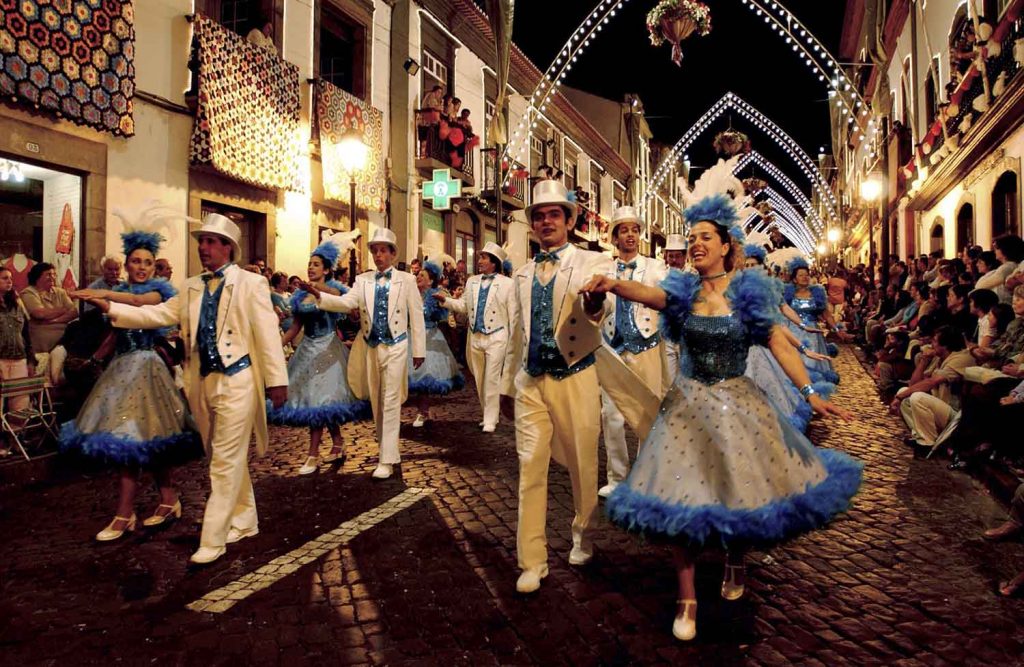
During the Carnival period, the Danças de Carnaval takes place, a singular popular theater event. For three days, the inhabitants of the island take to the streets or flock to the rooms so as not to miss even an instant of these “danças”, also called “bailinhos”. During the show, the various groups interpret stories in which the satirical component is very important.In June, the Sanjoaninas, festivals dedicated to St. John, invade the streets of Angra do Heroísmo for ten days in a row. Parades, concerts, bullfighting games (in the arena or on the streets), open taverns full of appetizing things, theater performances, fireworks and sporting competitions finally culminate in the great parade of popular marches.In August, Praia da Vitória presents an irresistible program: the Feasts of Praia include bullfighting games, exhibitions, processions, gastronomic fair, concerts and nautical competitions. At the beginning of September, in Biscoitos, a land of great winemaking tradition, the Vine and Wine Festivals take place.Angra do Heroísmo is the stage for two important music festivals: AngraRock, in September, and AngraJazz, in October. These are events that are part of the great musical tradition of the island, which at the popular level is expressed, for example, in the typical hit-and-answer cantari: even today the Tercereinsi festivals are enlivened by singers who improvise verses, amusingly amusing the listeners. The bullfighting tradition is still rooted in Terceira, an island where there are various bull farms. The activity is divided into bullfights made in the arena (or on the beach, as happens during the festivals of Praia), in which the bull is not killed in public, and the typical touradas à corda, events in which the bull runs for vie attached to a long rope held by a group of men. The era of bullfighting games generally runs from May to October, with regular and other spontaneous events.
GASTRONOMY
Terceira Island’s gastronomy is famous for its duck, generally prepared with beef, but also excellent when fish is used instead of meat.It is a dish characterized by slow cooking in a terracotta container, in which a sauce composed of bacon, onion, garlic, bay leaf, pepper and wine thickens and acquires flavor and aroma (but these are just some of the ingredients).
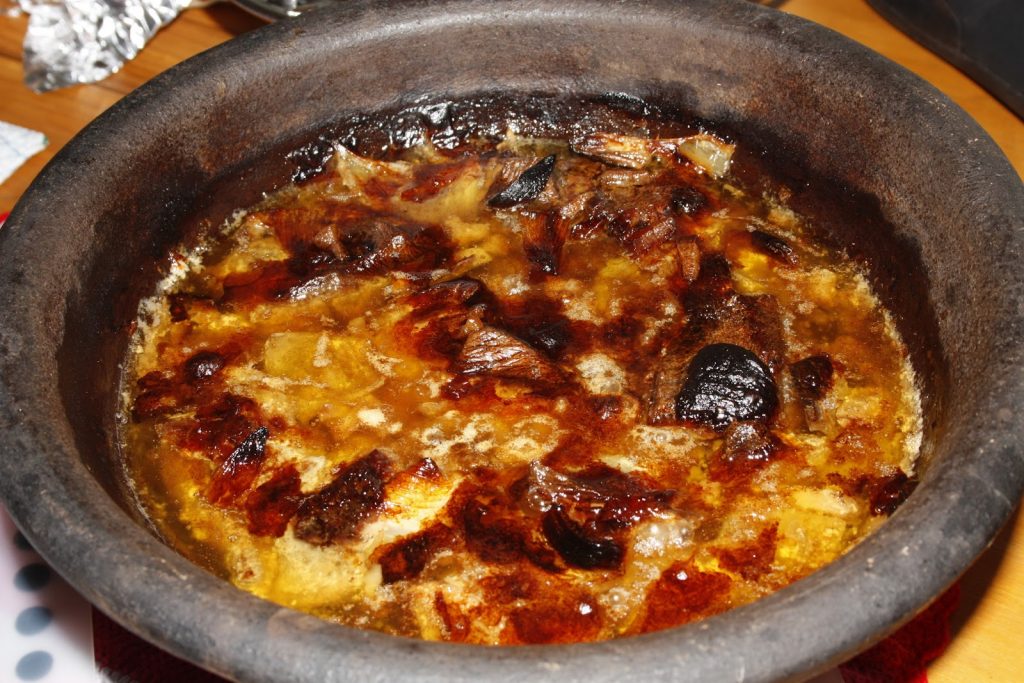
The duck is usually served with bread or sovada mass, slightly sweet. The same cooking method is found in other typical dishes: chicken, beans, rabbit, octopus or broad beans.Among the pastry products, Dona Amélia cakes are very well known, in which sugar cane molasses and cinnamon are combined with raisins and candied cedar. Tradition associates their name with the passage to the island of Queen D. Amélia. Os coscorões (a kind of chatter), cornucopias filled with egg cream or sweet rice are also rightly renowned.The landscape of the Biscoitos area is characterized by vineyards organized in curraletos (i.e. in square enclosures delimited by stone walls). From the grapes of the caste verdelho comes a wine that, since 1993, the Confraternity of Vinho Verdelho dos Biscoitos has been in charge of protecting and spreading. At the ‘Casa Agrícola Brum’ there is a Wine Museum where visitors have the privilege of being able to try the fortified wine called Chico Maria.








